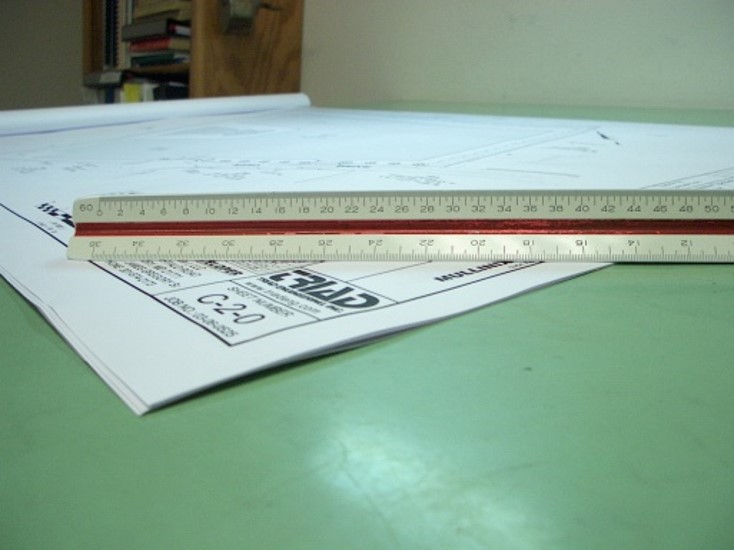Reflecting on 36 Years of CADD
By Greg Rhodes
 Looking back, it’s hard to believe I’ve been a part of this industry for 36 years. My journey began at Gerald Cump & Associates in June 1988, and when the company became part of Triad in 2004, I was happy to stay and continue growing with the team.
Looking back, it’s hard to believe I’ve been a part of this industry for 36 years. My journey began at Gerald Cump & Associates in June 1988, and when the company became part of Triad in 2004, I was happy to stay and continue growing with the team.
Over the years, I’ve been fortunate to work alongside coworkers who are dedicated to teamwork, and have a commitment to getting the job done right. That kind of camaraderie is rare, and it’s one of the many reasons I’ve stayed so long. The work environment has kept me motivated, challenged, and, truth be told—I haven’t been fired yet, so I must be doing something right!
When I first started at Cump, we weren’t using AutoCAD, so my days were spent at the drafting table using Rapidiograph pens, straight edges, and other traditional tools of the trade. When AutoCAD was introduced to the workplace by our Civil department, the transition was gradual, but once it took hold, it revolutionized the industry. Originally, drafting involved manually researching agency manuals and books, then using “sticky back” paper to overlay information onto drawings. Now, with everything available online, a few clicks replace hours of manual research. Instead of drawing everything by hand and physically creating prints, we can download files and insert them directly into AutoCAD, eliminating multiple steps and saving time. However, as technology has advanced, so have the complexities of our projects. While computers have streamlined many aspects of the job, the increasing level of detail and precision required means this remains a meticulous and time-intensive profession.
I still remember my first encounter with AutoCAD. It was back in trade school before I was hired by Cump when the software had just been released. Frankly, it was a very basic tool compared to what we use today. Creating straight lines and circles in the beginning. However, AutoCAD didn’t stay the simple program that it started off as for very long. Through many different versions and constant updates and upgrades ist steadily became the program that we know and use today.
The future of CADD is still unfolding, and who knows what new advancements are on the horizon? Even after 36 years in the field, there are still new features to explore and tools to master. One recent addition that has made a significant impact is data shortcuts, which allow us to create a surface or pipe network in one base drawing and reference it into others. This has greatly simplified our workflow and increased efficiency. When I started I never could have imagined what the program could accomplish today!
When I look back on some of the projects, I’ve been involved in over the years, there’s a real sense of accomplishment. We’ve worked on a variety of projects, from parks and solar installations to university campuses. The variety is almost endless. This variety is key to keeping the job fresh and interesting. Each new job brings a new set of problems to tackle and overcome. This is one of the reasons that I’ve been able to happily work in the same job for so many years.
For anyone just starting out in CADD, my advice is simple: be willing to learn. There’s so much to absorb, and the more you learn, the better you’ll get. Beyond that, be a team player. Ask questions, take notes, and don’t be afraid to get advice from coworkers. Teamwork has been a huge part of my success, and it’s something I’ve always valued. The people I’ve worked with at Triad have made all the difference, and together, we’ve been able to complete projects on time and with quality results.
As I look ahead, my goal remains the same: to continue doing the best work I can every day. Whether it’s mastering new AutoCAD features or tackling complex projects, I always try to improve and contribute. Triad has been a big part of my life, and I’m proud of what we’ve accomplished together. As I continue my work here, I’m excited for what’s to come and ready to face the challenges ahead.


